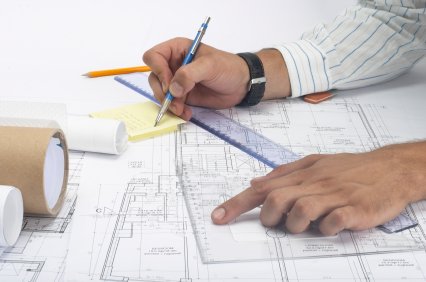Architect-Approved Home Improvement Ideas
Architect-Approved Home Improvement Ideas
Blog Article
Comprehending the Diverse Career Paths Available for Aspiring Architect
As a hopeful Architect, you have a world of job courses waiting for you. Whether you're attracted to standard style or the nuances of sustainable layout, there's a particular niche that lines up with your interests.
Typical Design: Creating Structures and Frameworks
Typical architecture concentrates on designing buildings and structures that blend functionality with visual appeal. Your designs can show social heritage, showcasing local practices while meeting contemporary requirements.
You'll develop skills in composing, model-making, and site analysis, allowing you to envision and connect your concepts effectively. Engaging with customers, you'll need to comprehend their vision and translate it into viable layouts.
In addition, constructing codes and sustainability techniques are crucial in your job, guaranteeing your structures are environmentally pleasant and risk-free. As you grow in your job, you'll discover chances in property, commercial, and even restoration tasks, each offering special obstacles. Accepting standard style leads the way for a satisfying occupation that admires the past while shaping the future.
Urban Preparation: Forming Neighborhoods and Public Spaces
As an aspiring Architect, you can play an important duty as a city coordinator, transforming how areas operate and engage. By using community engagement techniques, you'll guarantee that locals have a voice in shaping their setting. Plus, integrating lasting design concepts will certainly assist develop spaces that not only fulfill today's needs but likewise safeguard the future.
Duty of Urban Planners
While several could think of architects as the single dreamers behind structures, city planners play a vital function in shaping the broader landscape of neighborhoods and public areas. By working together with various stakeholders, you'll help make parks, transport systems, and domestic areas that advertise social interaction and availability. Your knowledge in spatial style and community characteristics permits you to imagine future development while preserving social heritage.
Area Interaction Techniques
Effective neighborhood engagement strategies are essential for city coordinators to assure that the voices of residents are listened to and valued in the planning procedure. To cultivate meaningful dialogue, you must focus on open discussion forums and workshops where area participants can share their concepts and problems. By proactively incorporating and listening comments, you'll produce spaces that reflect the community's needs, ultimately leading to more sustainable and successful urban environments.
Sustainable Design Principles
When creating metropolitan spaces, including sustainable design concepts is important for creating settings that flourish both ecologically and socially. Take into consideration integrating environment-friendly areas, like parks and gardens, to improve biodiversity and enhance air quality.
Creating with water preservation in mind is likewise vital-- believe regarding rainfall gardens and permeable surface areas to manage stormwater. Entailing neighborhood members throughout the planning procedure assurances that the rooms you create meet their demands and encourage social interaction. By accepting these concepts, you'll contribute to vivid, sustainable metropolitan landscapes that benefit every person.

Landscape Architecture: Creating Lasting Exterior Atmospheres
As you explore landscape style, you'll find important design concepts that produce stunning and functional exterior areas. Sustainable methods play an essential function in guaranteeing these environments prosper while minimizing ecological effect. Plus, you'll discover a variety of profession opportunities that permit you to make a real distinction in how individuals interact with nature.
Layout Principles in Landscape
Recognizing design principles in landscape design is vital for creating sustainable outdoor atmospheres that integrate with nature. You'll need to contemplate components like balance, percentage, and range to guarantee your styles really feel cohesive and inviting. Additionally, pay attention to seasonal changes, developing with products that enhance the surroundings year-round.
Lasting Practices Summary
Sustainable practices in landscape style not only concentrate on aesthetics but additionally focus on ecological health and wellness and resource preservation. By incorporating indigenous plants, you enhance biodiversity and minimize the demand for chemical plant foods and pesticides. Executing efficient watering systems assists conserve water and decreases drainage, shielding close-by ecological communities. You can make areas that advertise soil health and wellness, such as practicing and using organic materials permaculture concepts. Furthermore, incorporating eco-friendly infrastructure, like rainfall yards and permeable sidewalks, help in stormwater administration and minimizes metropolitan warm. You contribute to a healthier world and give spaces that promote neighborhood connection when you produce exterior environments with sustainability in mind. Inevitably, these methods guarantee your styles benefit both individuals and the environment for many years to come.
Occupation Opportunities Exploration
With a solid structure in sustainable techniques, landscape design provides a selection of occupation paths that permit you to make a significant influence on the environment. Urban coordinators often work together with landscape designers to produce environment-friendly areas in metropolitan settings, improving city livability. If you're passionate about education and learning, take into consideration ending up being a landscape architecture teacher, motivating future generations.
Lasting Design: Concentrating on Eco-Friendly Practices
As you explore your career in style, welcoming environmentally friendly practices can set you apart in an affordable area. Sustainable design concentrates on developing buildings that minimize ecological influence while boosting resident well-being. By including eco-friendly materials, energy-efficient systems, and sustainable structure techniques, you'll contribute to a greener future.
Begin by obtaining knowledge of eco-friendly certifications like LEED or BREEAM, which can strengthen your credentials. Consider how all-natural light, ventilation, and thermal effectiveness can optimize design. Work together with engineers and environmental find more professionals to introduce services that reduce waste and preserve sources.
Do not forget the value of neighborhood involvement-- interesting neighborhood stakeholders can inspire styles that harmonize with the atmosphere. As clients increasingly prioritize sustainability, your proficiency in environmentally friendly techniques will not only attract projects however also accomplish your interest for accountable architecture. Embrace this critical facet of the career, and enjoy your career flourish.
Historic Conservation: Protecting and Bring Back Social Heritage
While you commence on your architectural journey, take into consideration the necessary duty of historical preservation in maintaining our cultural heritage. This field concentrates on the protection and remediation of substantial structures, sites, and frameworks that inform the stories of our past. By taking part in historic conservation, you'll assist guard the architectural tradition that shapes neighborhood identification.
As a historic preservation Architect, you'll examine historical significance and analyze the condition of structures. You'll function closely with chroniclers and guardians to guarantee genuine repair methods are employed. This job path permits you to mix imagination with research study, allowing you to design solutions that respect initial materials and craftsmanship.
Your job not only adds to sustainability by reusing existing buildings however also cultivates a feeling of satisfaction within neighborhoods. Accepting this course will certainly aid you come to be a guardian of background, preserving the stories and aesthetics that improve our lives.
Inside Design: Enhancing Indoor Spaces
Historic preservation and indoor architecture both share a dedication to enhancing the built setting, but they concentrate on various facets. While historic preservation highlights keeping a framework's social and historical value, interior design zeroes in on enhancing indoor spaces for capability and aesthetics.
As a hopeful Architect, you'll find that indoor architecture allows you to mix creativity with technological abilities. You'll make areas that not just look good however also advertise comfort and performance. This field entails comprehending exactly how light, shade, and materials interact within an area, affecting mood and functionality.
You'll work with different jobs, from residential homes to industrial offices, guaranteeing that each setting fulfills the needs click reference of its occupants. By prioritizing individual experience, you can change interiors into motivating and useful spaces, making a substantial effect on just how individuals engage with their surroundings. Embrace the opportunity to improve interior atmospheres and shape the means individuals function and live.
Industrial Design: Merging Performance With Visual Appeals
Industrial design plays an important role in creating items that seamlessly mix aesthetic appeals with functionality, guaranteeing that what you use daily is not just visually enticing yet also practical. As a hopeful Architect, you could involve yourself in this area, concentrating on making whatever from furniture to consumer electronics. Your work entails recognizing user needs, products, and making procedures, permitting you to develop cutting-edge options that enhance everyday experiences.
In industrial layout, you'll frequently work together with online marketers, makers, and engineers, ensuring that your styles are not only lovely however likewise practical. This profession path offers a vibrant environment where imagination satisfies usefulness, making it a fulfilling option for engineers interested in forming the products of tomorrow.
Often Asked Concerns
What Educational Qualifications Do I Required to Become an Engineer?
To become an architect, you'll require a specialist degree in style, commonly a Bachelor's or Master's. In addition, you'll have to finish an internship and pass the Architect Registration Assessment to practice legitimately.
Are There Certification Demands for Various Building Occupation Paths?
Yes, there're accreditation requirements for numerous building courses. Architect. You'll need to pass exams, complete internships, and occasionally pursue specialized training, depending on your picked focus, like landscape design, metropolitan style, or historic conservation
What Software Skills Are Crucial for Architects Today?

How Can I Gain Practical Experience While Researching Style?
You can acquire practical experience by interning at building firms, taking part in design competitors, offering for community jobs, or working together with classmates on real-world projects. These possibilities enhance your skills and develop useful connections in the industry.
What Task Opportunities Exist Outdoors Typical Design Firms?
You can explore numerous task opportunities outside conventional architecture firms, like urban preparation, indoor layout, landscape design, building management, realty advancement, or perhaps duties in sustainability consulting. Each deals distinct obstacles and rewards.
Whether you're drawn to conventional design or the subtleties of lasting design, there's a particular niche that aligns with your rate of interests.When designing city spaces, integrating lasting layout concepts is essential for developing atmospheres that grow both environmentally and socially.As you explore landscape architecture, you'll find crucial layout principles that create useful and attractive outdoor areas.Recognizing layout concepts in landscape architecture is essential for creating sustainable outdoor atmospheres that balance with nature.In commercial style, you'll usually collaborate with marketers, designers, and suppliers, ensuring that your layouts are not just lovely however also feasible.
Report this page